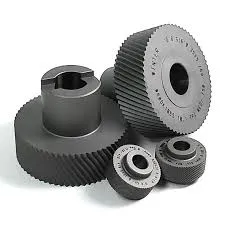
-
 Afrikaans
Afrikaans -
 Albanian
Albanian -
 Amharic
Amharic -
 Arabic
Arabic -
 Armenian
Armenian -
 Azerbaijani
Azerbaijani -
 Basque
Basque -
 Belarusian
Belarusian -
 Bengali
Bengali -
 Bosnian
Bosnian -
 Bulgarian
Bulgarian -
 Catalan
Catalan -
 Cebuano
Cebuano -
 Corsican
Corsican -
 Croatian
Croatian -
 Czech
Czech -
 Danish
Danish -
 Dutch
Dutch -
 English
English -
 Esperanto
Esperanto -
 Estonian
Estonian -
 Finnish
Finnish -
 French
French -
 Frisian
Frisian -
 Galician
Galician -
 Georgian
Georgian -
 German
German -
 Greek
Greek -
 Gujarati
Gujarati -
 Haitian Creole
Haitian Creole -
 hausa
hausa -
 hawaiian
hawaiian -
 Hebrew
Hebrew -
 Hindi
Hindi -
 Miao
Miao -
 Hungarian
Hungarian -
 Icelandic
Icelandic -
 igbo
igbo -
 Indonesian
Indonesian -
 irish
irish -
 Italian
Italian -
 Japanese
Japanese -
 Javanese
Javanese -
 Kannada
Kannada -
 kazakh
kazakh -
 Khmer
Khmer -
 Rwandese
Rwandese -
 Korean
Korean -
 Kurdish
Kurdish -
 Kyrgyz
Kyrgyz -
 Lao
Lao -
 Latin
Latin -
 Latvian
Latvian -
 Lithuanian
Lithuanian -
 Luxembourgish
Luxembourgish -
 Macedonian
Macedonian -
 Malgashi
Malgashi -
 Malay
Malay -
 Malayalam
Malayalam -
 Maltese
Maltese -
 Maori
Maori -
 Marathi
Marathi -
 Mongolian
Mongolian -
 Myanmar
Myanmar -
 Nepali
Nepali -
 Norwegian
Norwegian -
 Norwegian
Norwegian -
 Occitan
Occitan -
 Pashto
Pashto -
 Persian
Persian -
 Polish
Polish -
 Portuguese
Portuguese -
 Punjabi
Punjabi -
 Romanian
Romanian -
 Russian
Russian -
 Samoan
Samoan -
 Scottish Gaelic
Scottish Gaelic -
 Serbian
Serbian -
 Sesotho
Sesotho -
 Shona
Shona -
 Sindhi
Sindhi -
 Sinhala
Sinhala -
 Slovak
Slovak -
 Slovenian
Slovenian -
 Somali
Somali -
 Spanish
Spanish -
 Sundanese
Sundanese -
 Swahili
Swahili -
 Swedish
Swedish -
 Tagalog
Tagalog -
 Tajik
Tajik -
 Tamil
Tamil -
 Tatar
Tatar -
 Telugu
Telugu -
 Thai
Thai -
 Turkish
Turkish -
 Turkmen
Turkmen -
 Ukrainian
Ukrainian -
 Urdu
Urdu -
 Uighur
Uighur -
 Uzbek
Uzbek -
 Vietnamese
Vietnamese -
 Welsh
Welsh -
 Bantu
Bantu -
 Yiddish
Yiddish -
 Yoruba
Yoruba -
 Zulu
Zulu
Exploring the Manufacturing Processes of Thread Rolling Machines in Modern Factories Today
The Evolution and Working of Thread Rolling Machines in Factories
In modern manufacturing, precision and efficiency are paramount, especially when it comes to producing thread products for various applications. Thread rolling machines have become a cornerstone in the factories producing fasteners, screws, and bolts, ensuring that these components meet stringent quality standards while reducing production time. This article explores the working principles of thread rolling machines and their significance in manufacturing.
What is Thread Rolling?
Thread rolling is a cold forming process used to produce external threads on cylindrical workpieces. Unlike traditional cutting methods, which remove material to create threads, thread rolling displaces material, resulting in a stronger and more precise thread profile. This method is particularly favored for producing threaded fasteners because it enhances the mechanical properties of the metal, including tensile strength and fatigue resistance.
Working Principles of Thread Rolling Machines
Thread rolling machines operate on a simple yet effective principle. These machines consist of three primary components the rolling dies, the workpiece holder, and the drive mechanism. The rolling dies are designed with specific thread profiles and are positioned at an angle to each other. When the workpiece, typically made of steel or another durable metal, is fed through the rolling dies, the machine’s drive mechanism rotates the dies, applying compressive forces onto the workpiece.
As the workpiece passes through the rolling dies, the material is displaced and formed into the desired thread shape. The non-cutting nature of this process allows for high production rates and excellent dimensional accuracy. Additionally, it minimizes waste, making thread rolling a cost-effective manufacturing solution.
Advantages of Thread Rolling Machines
thread rolling machine working factories

The use of thread rolling machines in factories presents several advantages. First and foremost, the method significantly increases production efficiency. With precise adjustments, manufacturers can produce large quantities of threaded parts in a short period. This is particularly beneficial in industries where time-to-market is critical.
Moreover, the quality of the threads produced through rolling is often superior to those manufactured through cutting. The rolling process compacts the grain structure of the metal, leading to improved mechanical properties. These advantages make thread rolling machines an essential investment for factories focusing on high-quality fastener production.
Another notable benefit of thread rolling is its flexibility. Machines can be adjusted to produce various thread sizes and shapes, accommodating changing customer demands without the need for extensive tooling changes. This adaptability helps manufacturers stay competitive in an ever-evolving market.
Applications in Modern Factories
The versatility of thread rolling machines makes them suitable for a range of applications across various industries. Automotive, aerospace, and construction sectors heavily rely on these machines to produce high-strength fasteners that meet rigorous industry standards. In the automotive industry, for instance, thread-rolled bolts are essential for assembling components that require tight fittings and durability under stress.
Similarly, in aerospace, the need for lightweight yet robust fastening solutions makes thread rolling a preferred manufacturing method. The production of screws for equipment and machinery in construction also benefits from the efficiency of thread rolling techniques.
Conclusion
Thread rolling machines play a crucial role in modern manufacturing, transforming the way threaded products are produced. Their ability to enhance productivity, improve material properties, and adapt to various production needs underscores their importance in factories today. As manufacturers continue to seek ways to optimize processes and maintain quality, thread rolling machines will undoubtedly remain at the forefront of efficient production techniques in the industry, paving the way for innovation and excellence in threaded component manufacturing.
